Have you ever heard of Chinchero?
When planning my trip to Peru, two of the things that I wanted to see besides Machu Picchu were women dyeing textiles with natural pigments and the transformation of an insect into lipstick.
Those things always fascinated me, and since finding out that Chinchero, a village near Cusco, is home to the famous Peruvian weaving, I have become really interested in visiting it.
After spending some time in Lima, I arrived in Cusco early in the morning on a Sunday.
Cusco is much bigger than I thought and it’s busy with tourists and locals.
I arrived at the hostel where I stayed, checked in and walked to Pavitos Street to take a van to Chinchero.
Table of Contents
My Experience Visiting Chinchero
Chinchero is a village in the Sacred Valley between Cusco and Urubamba.
It sits at an elevation of 12,500 feet (3,762 m), 1300 feet (362m) higher than Cusco, and provides striking views of the Urubamba mountain range.
After around a 40-minute drive, I arrived in the small town.
Getting out of the van and walking down on the streets my feeling was that it was a very special village: women beautifully dressed in colourful and traditional Peruvian clothes in a low pace environment.
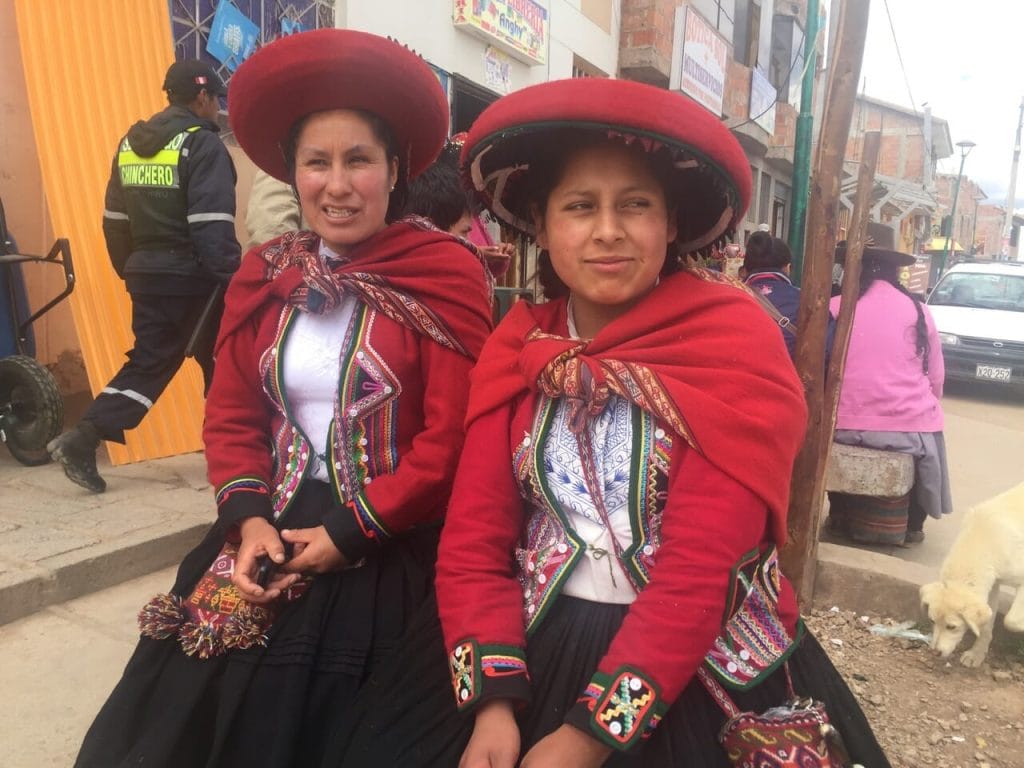
Chinchero Market
Most people visit Chinchero to see its famous and bright-coloured market, which’s held on Tuesdays, Thursdays, and Sundays. But, the dominical is the largest, busiest and best one.
The local market is located in a square very close to some archaeological sites and ruins. It’s very simple, with streets without pavements and people selling their products on blue canvases on the ground.
Local women and a few tourists mostly frequent the market.
The women have on traditional Peruvian clothes typical from this area: red circular hats and sweaters with colourful details on the wrist and on the front, red shawls, white shirts and black skirts.
Braids in the hair compose a very charming and lovely look. The costumes are impressive!
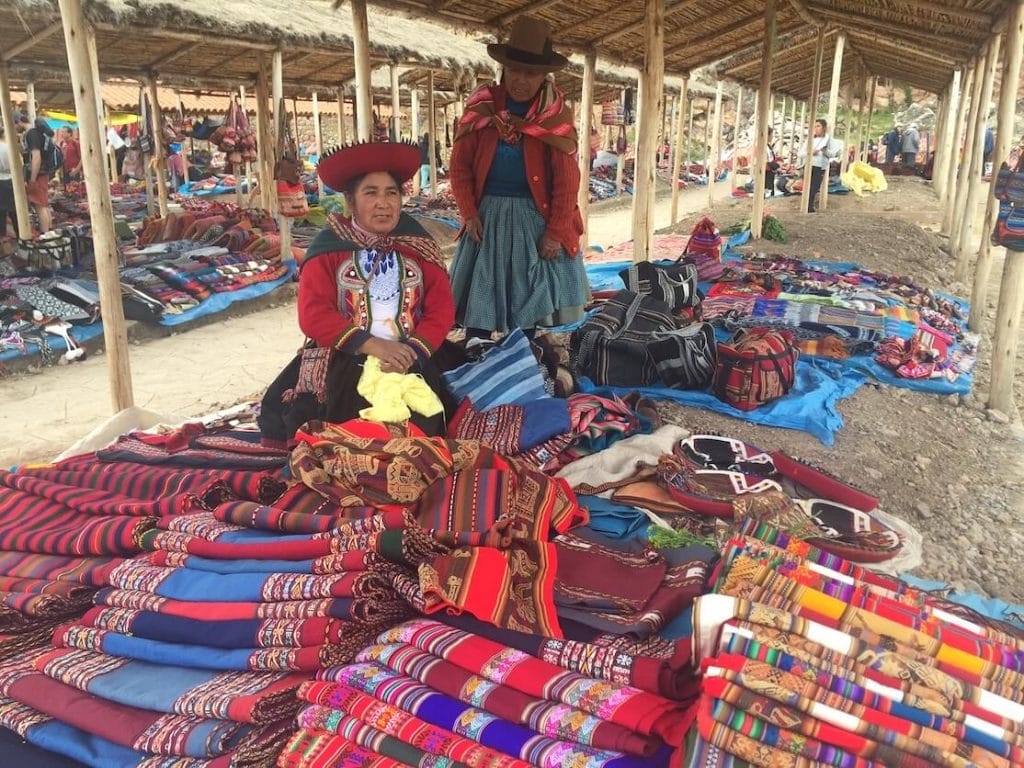
Chinchero market has loads of goods, from fruit, meat and seafood, to tons of textiles with different colours and souvenirs.
My eyes were glittering as much as the sun and I was so delighted with all those vivid colours.
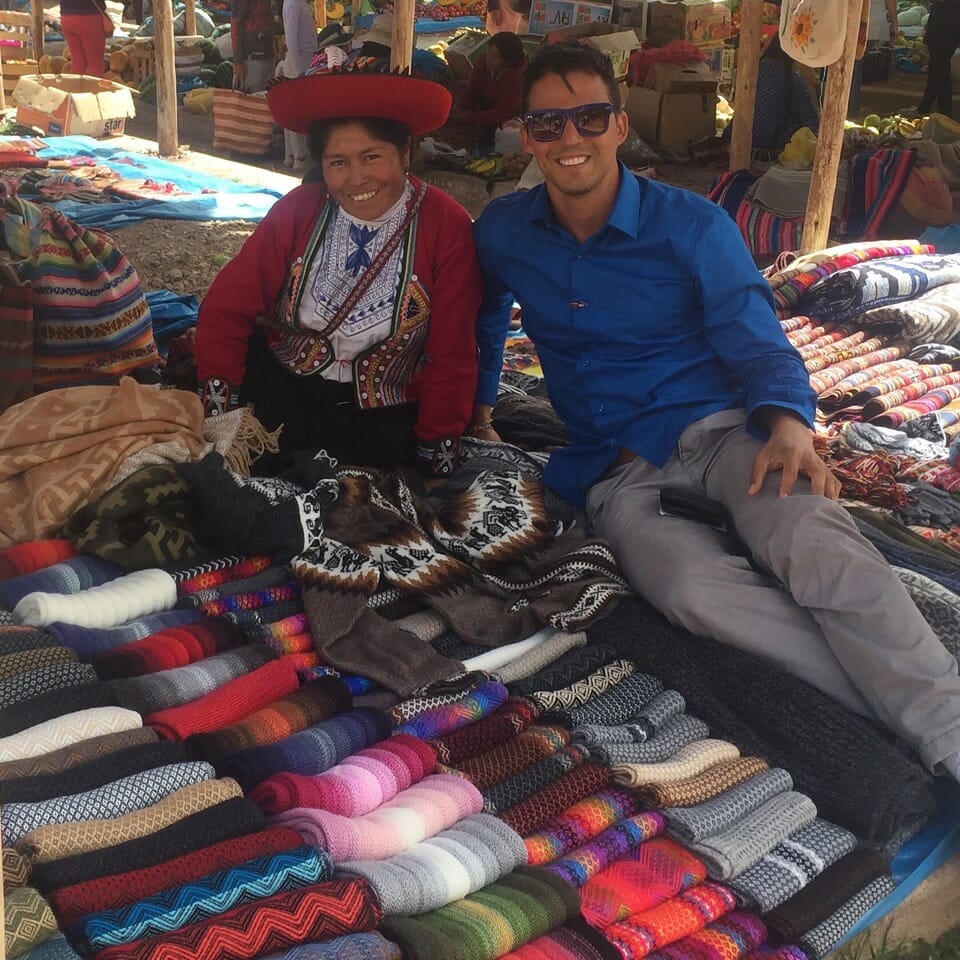
If the sellers were elegantly dressed, the buyers were not different.
Most of the women doing their grocery shopping had on a hat and skirt and a long braid down their backs. They also had a colourful sheet wrapped on the chest and around the back to carry their products.
I love to see people dressed in their traditional clothes when I travel.
It’s as if the external influences of the “modern world” does not exist, and at the same time, you dive into their culture and reality.
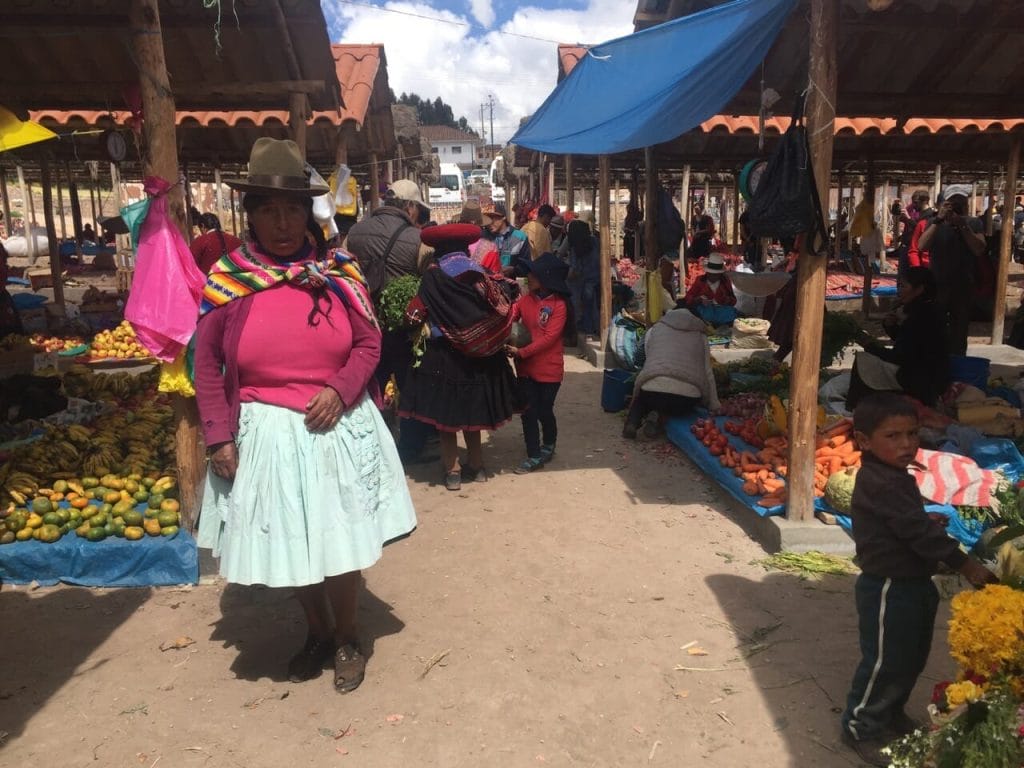
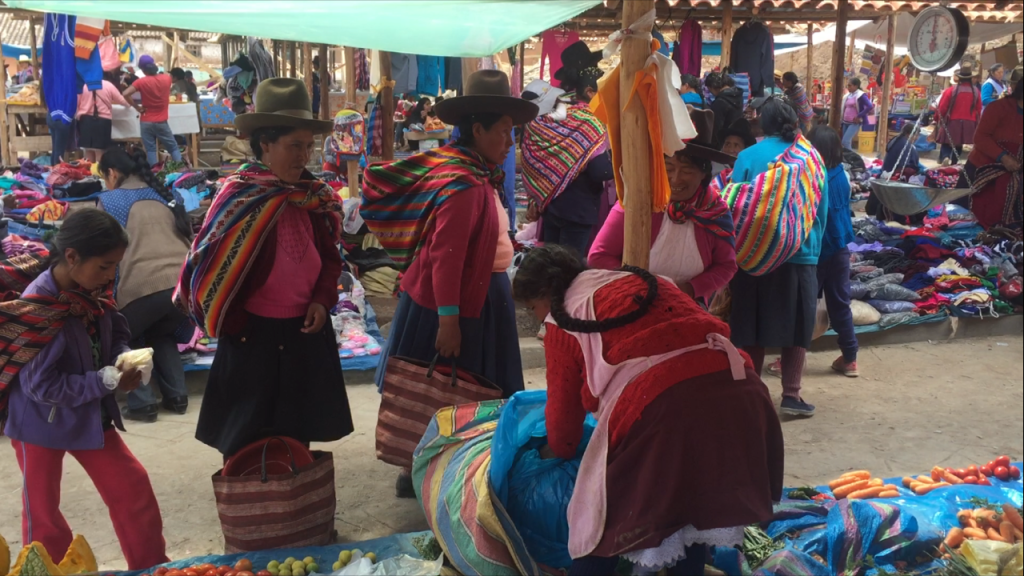
I spent some time people-watching, talking to locals, bargaining and even had Chicharrónes, delicious Peruvian food for lunch, made with pork belly fried served with potatoes, maize and salad (mint and onion).
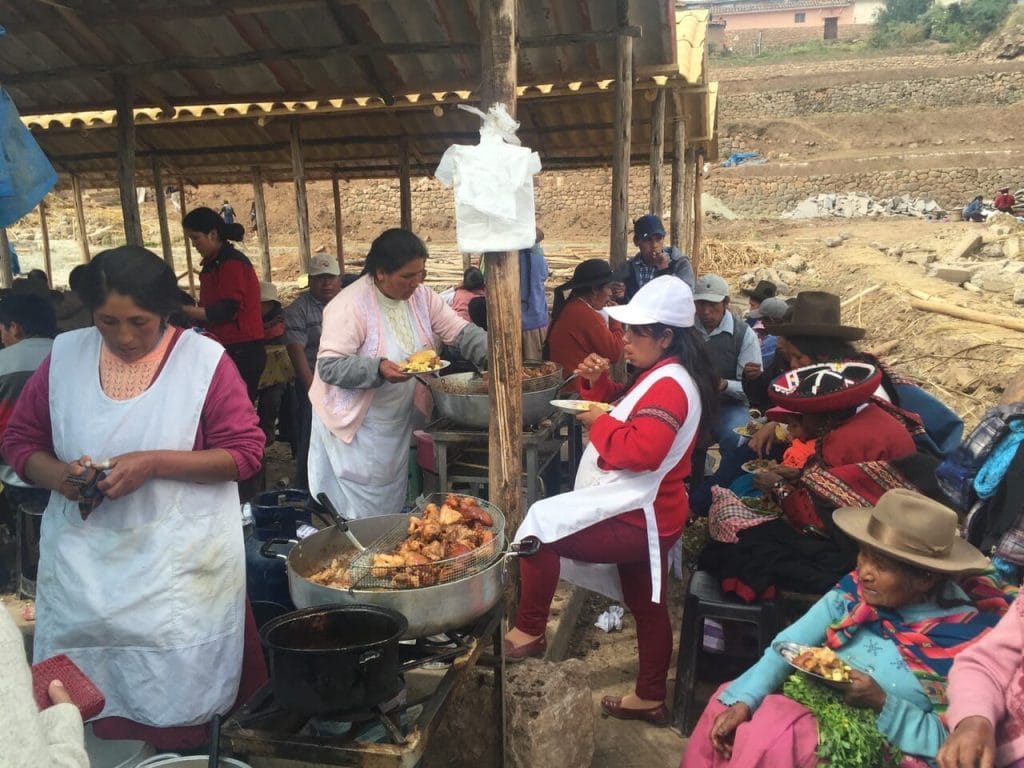
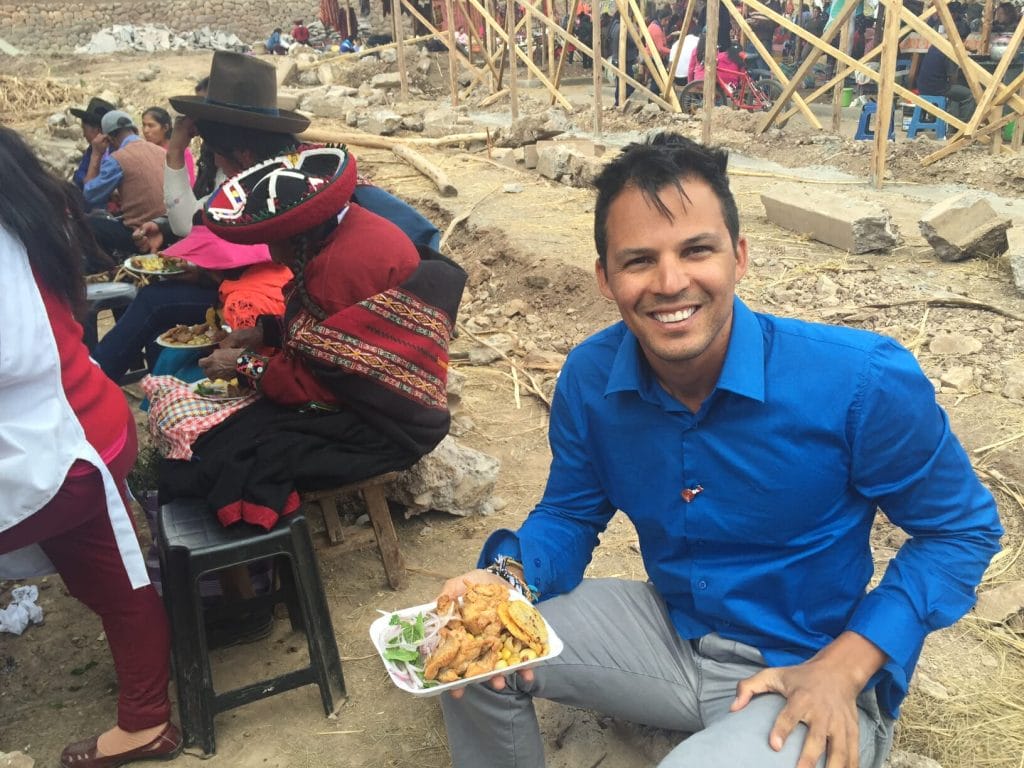
But what I was really looking forward to seeing was the women dyeing wool.
An old tradition survives in Chinchero
Very close to the market I found a house with flowers on the front (a sign that you can find women weaving and dyeing alpacas).
A young man welcomed me and called the ladies to do the weaving presentation for me. The two teenage girls were prettily well-dressed and invited me to sit down.
In front of me were some plants, flowers, cacti, wool, baskets with wool tubes, and bowls with lime, leaves, maize and a tubercle.
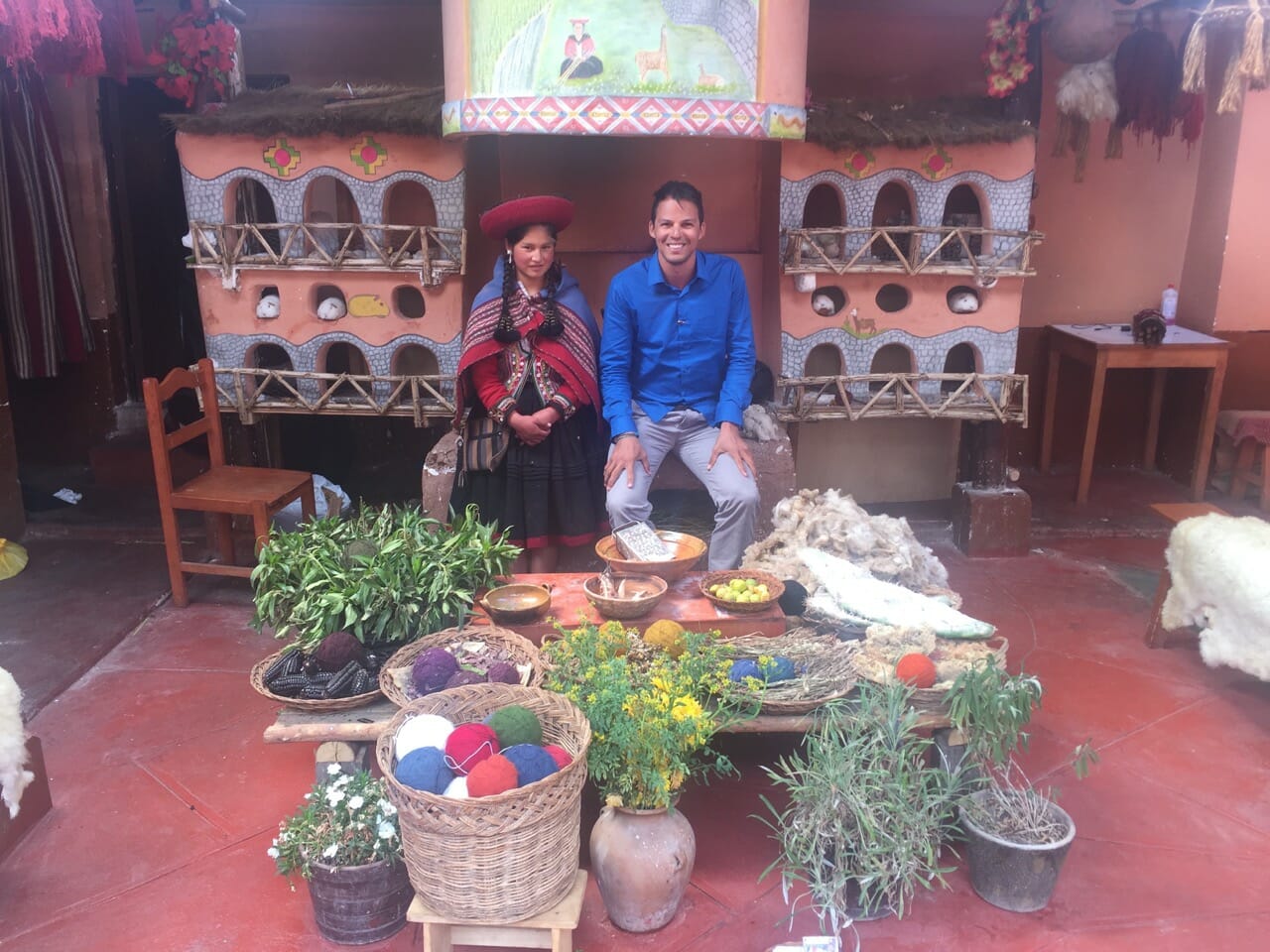
The pigments
One of the girls started grating the tubercle called saqta in a bowl, then pouring water and mixing it.
She explained that this is used to clean the wool and she put some really dirty wool in the bowl and washed it. The transparent water suddenly became brownish and the wool became white.
She has just started and I was already impressed!
The second step was to put the wool to dry and then winding it into thread.
They do that so easily that she made a joke saying that they can do many other things while executing this task, even kiss their boyfriend.
I could not imagine how “easy” it can be to make the natural wool into thread for textiles.
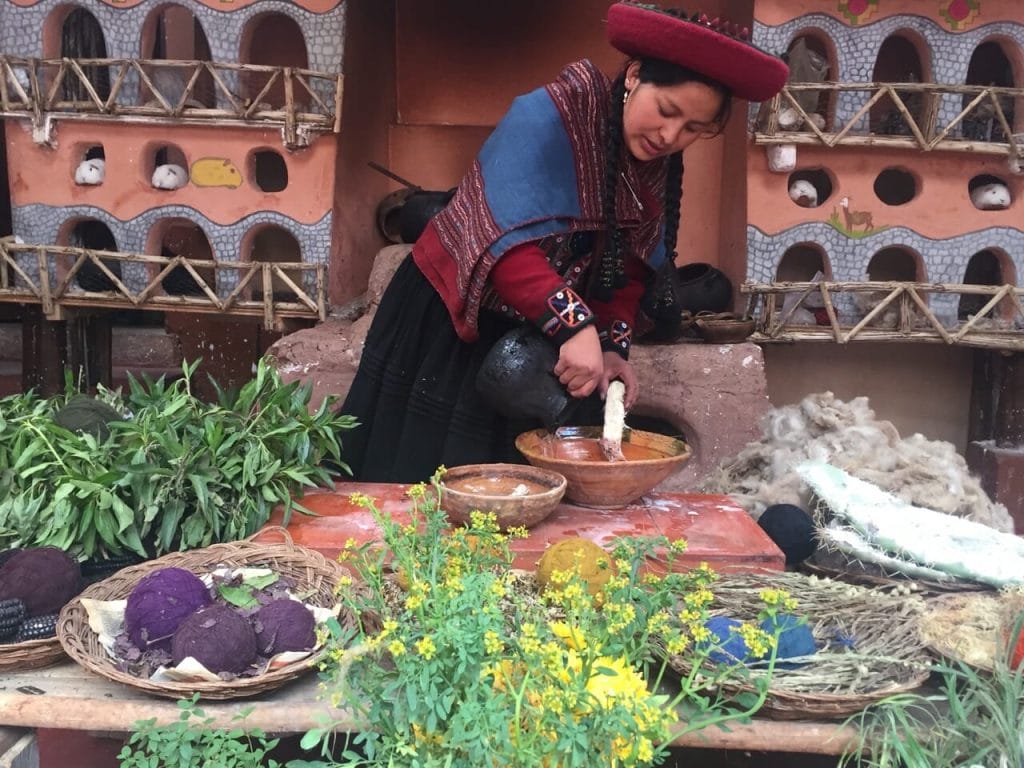
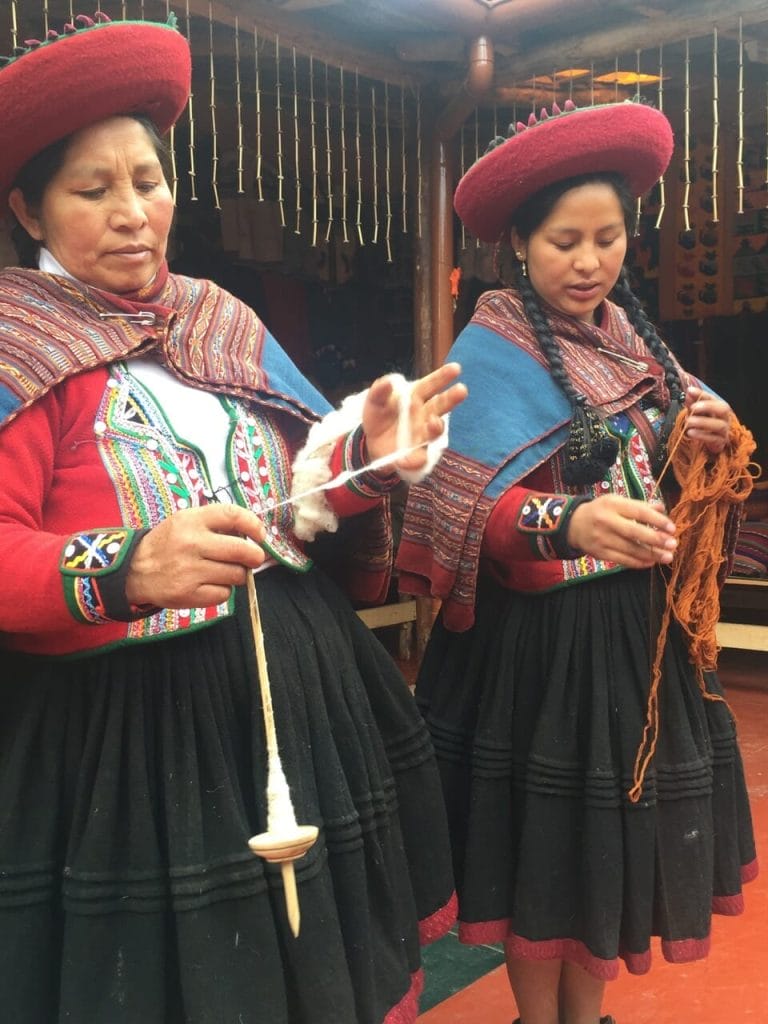
After that she started showing me the different pigments used to get the colours: ch’ilka, a plant, to get green; maize morado light purple; awaypilly leaves, dark purple: holly flower, yellow; kinsakucho plant, blue; qqaqasunka, a moss, orange; conchinilla (Dactylopius coccus), an insect, to get the red colour.
To fix the colour they use lime, salt, a mineral called Qollpa and urine.
I wondered how they found all those things and developed all these techniques. It is amazing!
When she got the cochinilla, a tiny black insect, from the cactus and smashed it, a purple colour came out on her hand. I was speechless!
The lady put some lime to dissolve the colour and explained that the cochinilla is used internationally in the cosmetic industry and they’ve been using it for hundreds of years.
She put some red colour on her lips using her finger.
It might be the cheapest lipstick in the world. Those ladies are so lucky!
The dying process
She demonstrated how to dye wool: putting it in boiling water with the respective pigment and the fixer and in an amount of time the wool changes according to the colour that they want to get.
Then, they hang the dyed wool to dry and after that, it is ready to be used on the loom.
The family uses looms to make delightful clothes, bags, tapestries and textiles in general. Everything is carefully handcrafted and so colourful that it is impossible to resist and not buy everything.
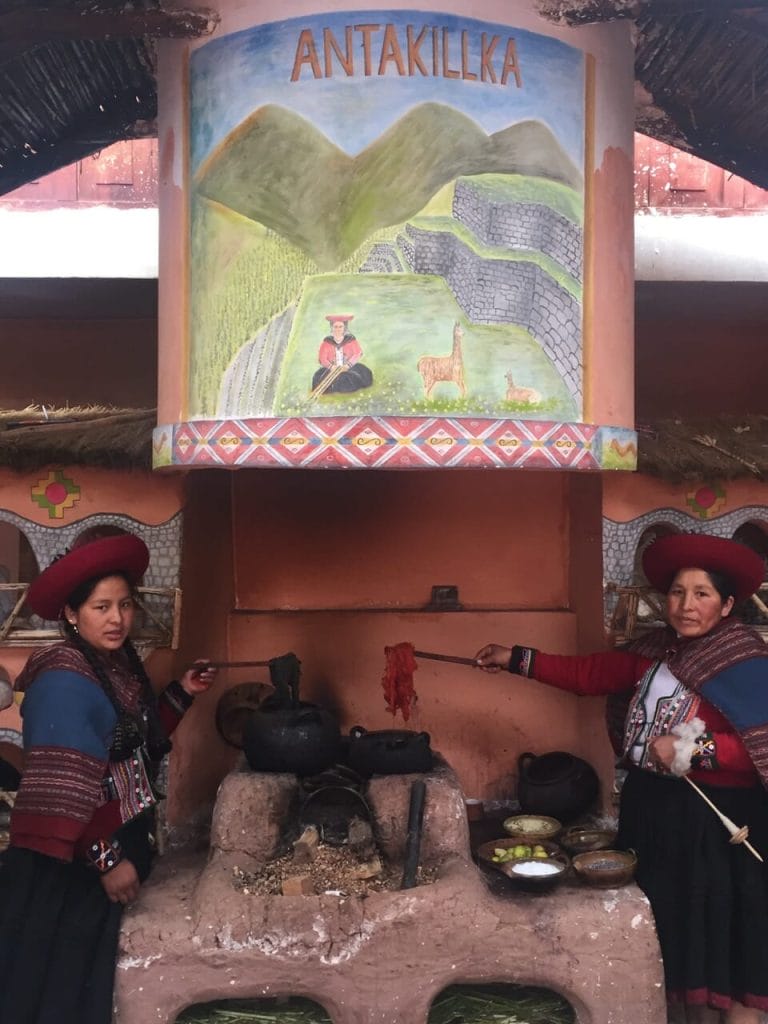
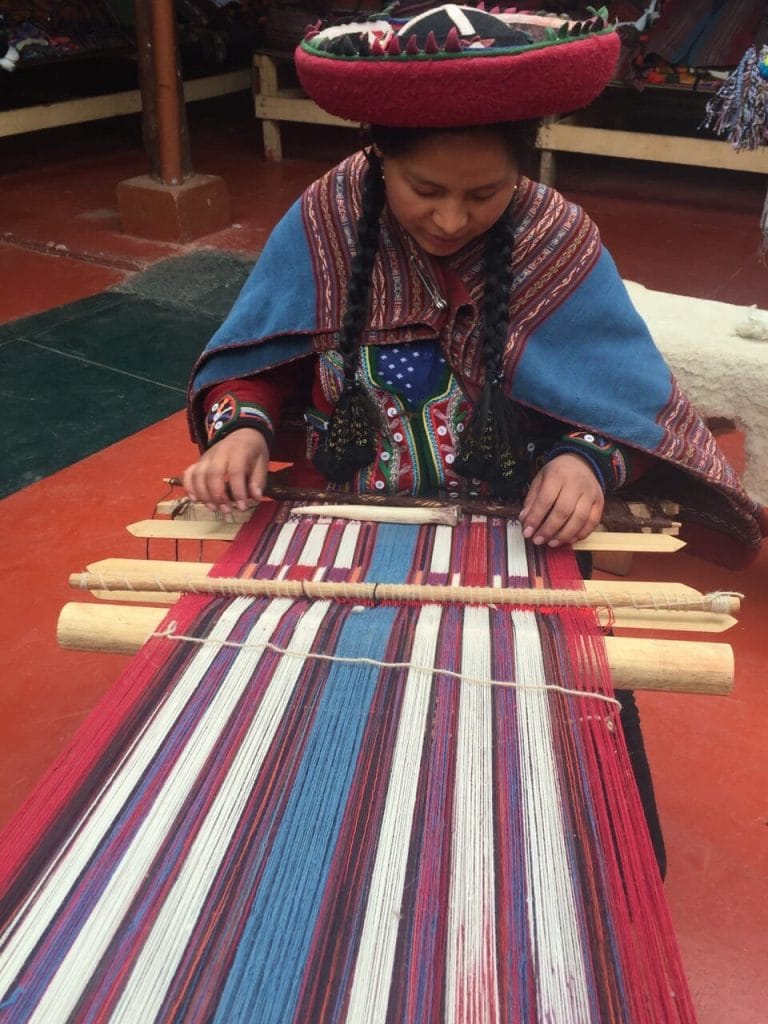
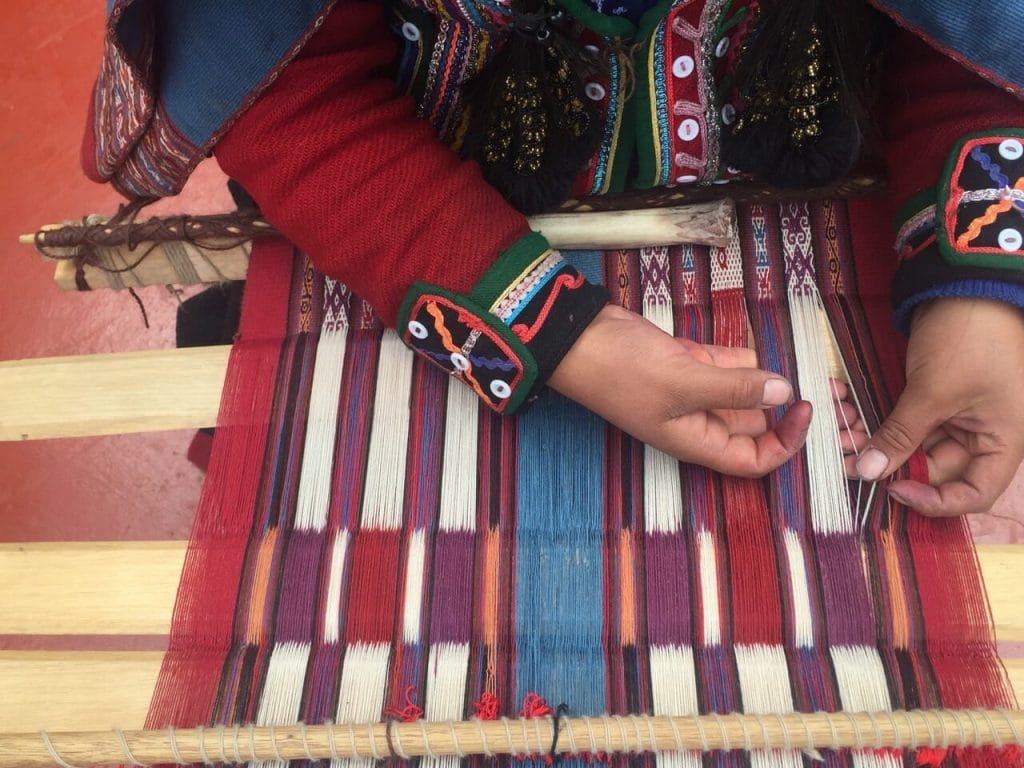
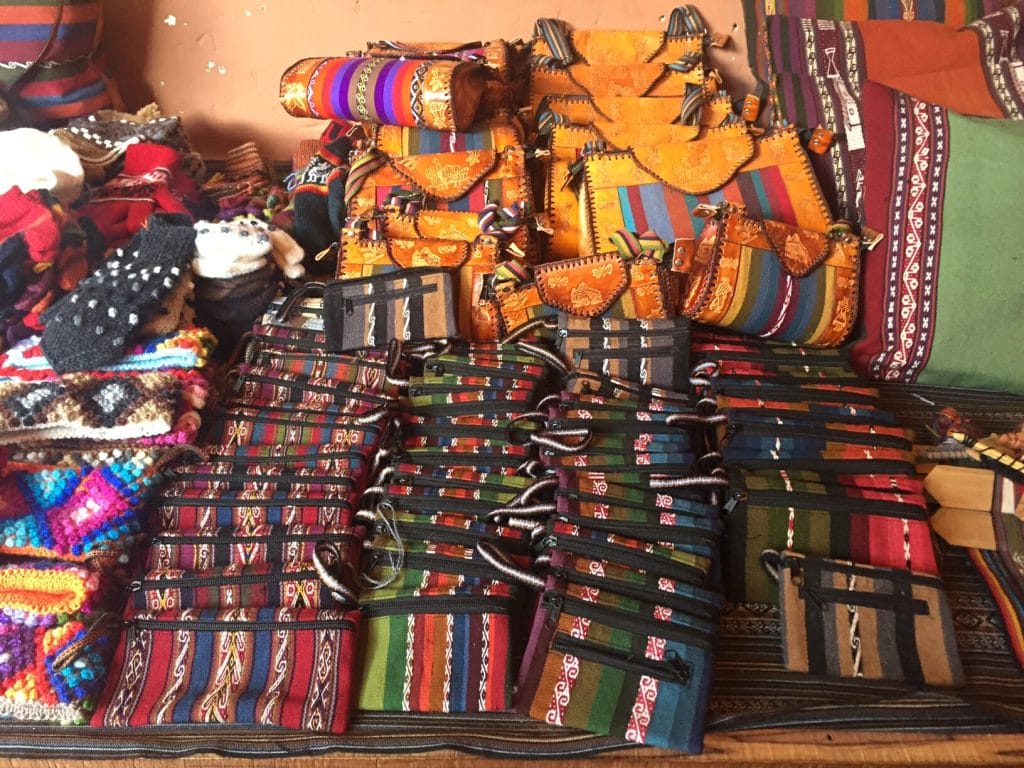
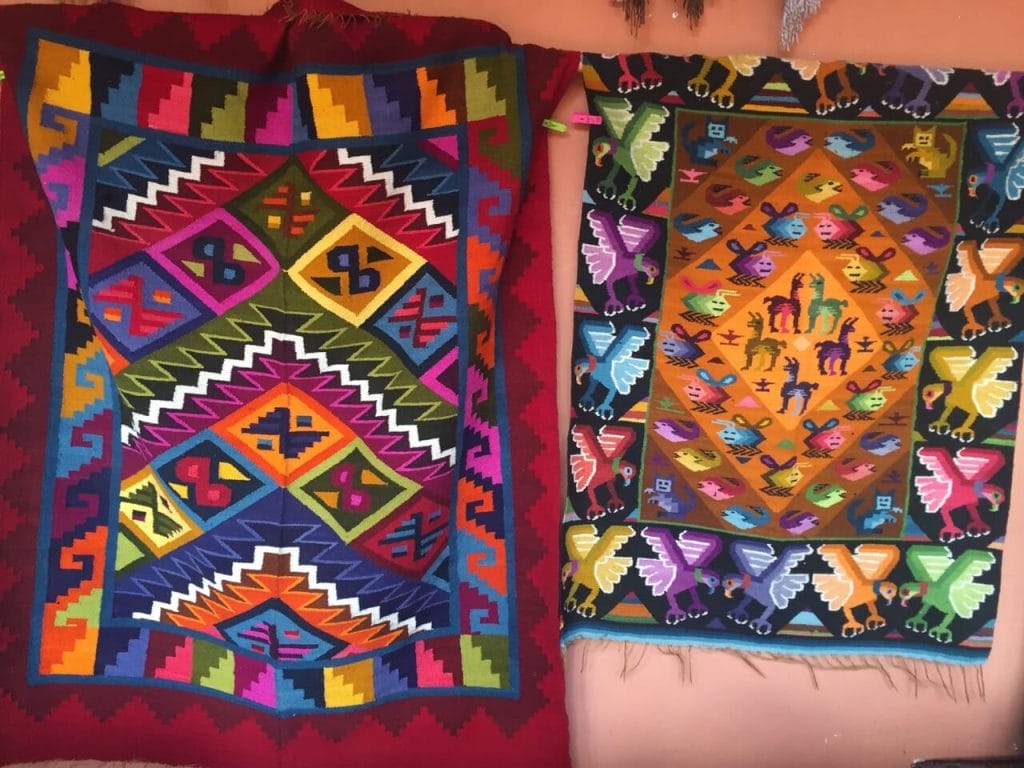
The Antakillka is a family business, and the knowledge has been passed down from generation to generation.
They speak Spanish and Quechua (another Peruvian official language), and they do weaving presentations every day from 8:00 AM to 6:00 PM, it’s free but tips are very welcome.
They are so adorable and friendly that I wished I could have stayed there the whole day to learn everything.
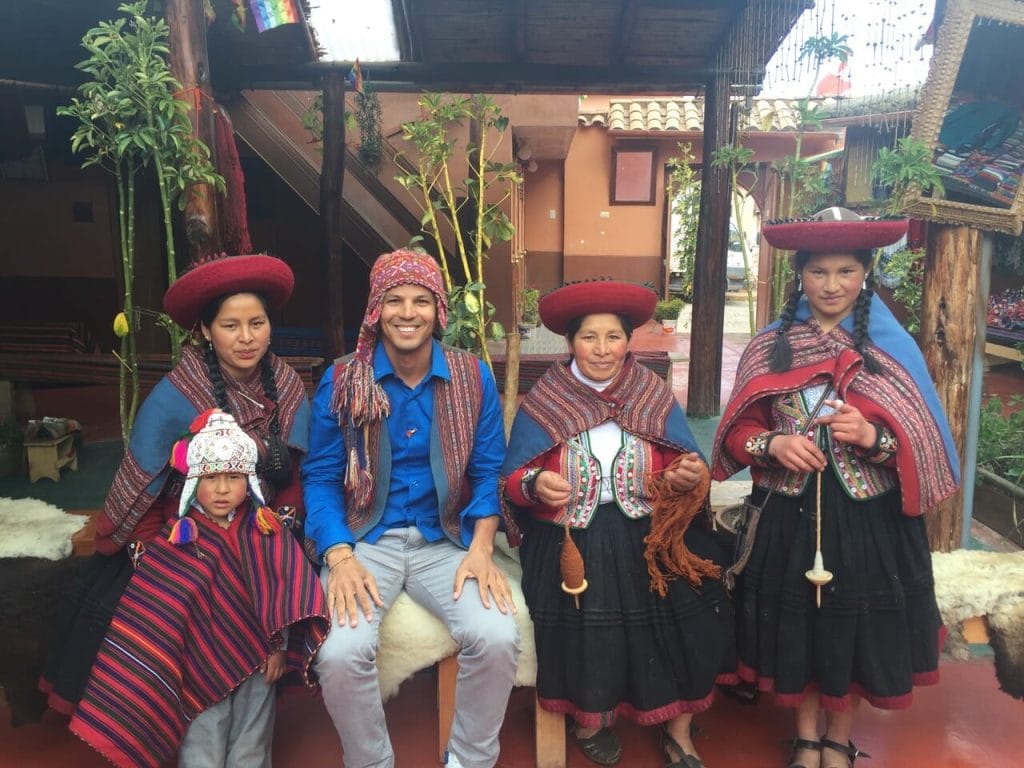
I felt so thankful and grateful for visiting Chinchero and seeing all these old traditions that are still preserved.
I hope it can be immune to globalization and technology because it is so fascinating and interesting exactly the way it is.
Safe travels and have fun in Peru.
“This article is now featured on https://www.gpsmycity.com. To download this article for offline reading or travel directions to the attractions highlighted in this article, go to Walking Tours and Articles in Chinchero on GPSmyCity.”
More posts that might interest you:
- Machu Picchu Mountain Hike: The Hardest I’ve Ever Done
- Visiting Machu Picchu: 7 Essential Tips
- Machu Picchu on a budget
- When things go wrong…
Watch Video: The Fascinating Chinchero Weaving and Market
How to Visit Chinchero
Where is Chinchero located?
Chinchero District is one of seven districts of the Urubamba Province in Peru, located 30 Km (18.8 mi) from Cusco (check map here).
Best time to visit it
You can visit Chinchero all year-round, but take into consideration that you’re visiting Cusco and Machu Picchu as well, and the best time to visit those places is during the shoulder seasons: May/June and September/October.
How to get to Chinchero from Cusco?
You can take a van on Pavitos Street to Ollantaytambo, but I highly recommend booking a tour.
There are several day tours departing from Cusco at reasonable prices.
This Sacred Valley Of The Incas Tours costs US$ 25, has pickup and drop-off included, and you will visit Pisac, Ollantaytambo and Chinchero. Book your tour online in advance here.
If you only want to visit Chinchero, my recommendation is to take this Half-Day Tour .
Where to stay?
I stayed at Hostal Mallqui in Cusco.
Other Sacred Valley Tours from Cusco
- Book Your Flight Find deals on airlines on my favorite search engine: Skyscanner. Be sure to read my How to find cheap flights article.
- Rent A Car Rental Cars is a great site for comparing car prices to find the best deal.
- Book Accommodation Booking.com is my favorite hotel search engine. But Hotels.com and Hilton Hotels have very interesting reward programs.
- Protect Your Trip Don’t forget travel insurance! I always use World Nomads for short-term trips and SafetyWing for long-term ones. Find out why Travel Insurance: Much More Than a Precaution, a Necessity.
- Book Tours in Advance Book unforgettable experiences and skip-the-line tickets with GetYourGuide or Viator .
- Book Ground Transportation BookaWay offers a stress-free experience with secure payments and no hidden fees. You pay online and receive your itinerary by email.
- Luggage Solutions Rent your luggage with Cargo or if you need to drop off your own luggage and enjoy your time without dragging it all over a city, find a LuggageHero shop here.
- Get a Travel Card Revolut Card is a pre-paid debit card that enables cash machine withdrawals in 120 countries. I’ve been using my Revolut Card for over a year and never paid foreign-transaction fees again. Get your Revolut Card with free shipping here.
- Packing Guide Check out my How to Pack a Carry-on Luggage For a Five-month Trip to help you start packing for your trip. Don’t forget your camera, chargers and other useful travel accessories. World Nomads provides travel insurance for travelers in over 100 countries. As an affiliate, we receive a fee when you get a quote from World Nomads using this link. We do not represent World Nomads. This is information only and not a recommendation to buy travel insurance.


Would you say it is worth to go there just for the market ?
Hello Michel.
Just for the market would be such a pity.
There are places where they do the demonstration (dyeing alpaca) in English as well. And also, if you’re buying the Boleto turístico, there are some ruins that you can visit as well. It’s all one package buddy.
If you just want to go to a market, the Pisac is bigger and better but also more touristy. And again, there are some ruins in Pisac as well and the views are spectacular.
Cheers